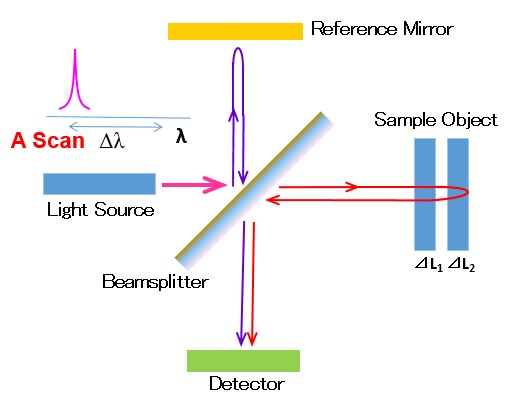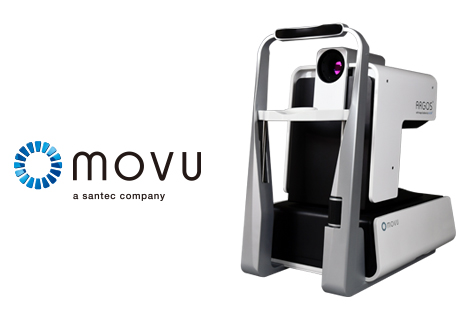What is a OCT?
OCT, which stands for the Optical Coherence Tomography, is an imaging technique based on low-coherence light. It is a well-known method for medical diagnosis especially in ophthalmology. OCT uses light interference to take cross-sectional images used for measurements. OCT follows a similar principle to that of ultrasound, depending on the object being measured. Although ultrasound achieves greater imaging depth than OCT, OCT is capable of sub-micron level imaging, higher than that of ultrasound. Another favorable aspect of OCT is its non-invasive and no-contact measurement capability. Although OCT was initially developed for medical applications, OCT has expanded its range of applications into the industrial field.

Santec’s OCT Technology
The history of OCT begins with Dr. James Fujimoto at Massachusetts Institute of Technology in 1991. In 1996, the first OCT device for retina imaging was launched by Humphrey Ltd. in United States. The method of OCT which is mentioned in the journal above, is called Time-Domain OCT (TD-OCT) because it changes the optical path length of the reference light on the time domain to obtain the optical axis interference signal.

Meanwhile, a method called the Fourier Domain OCT (FD-OCT) for obtaining data in the frequency domain was reported by Fercher at the University of Vienna in 1995. This method is a hundred times more sensitive and ten times faster than TD-OCT. Among the FD-OCT methods, the Spectral Domain OCT (SD-OCT), which acquires data from the frequency domain using a spectroscope, was launched in 2006 by Topcon Corporation in Japan as the world’s first OCT for ophthalmology. From the initial development, we see OCT being the one of the most common imaging methods in ophthalmology. However, due to the limitations in measurement depth, a newer generation OCT has been introduced in order to solve this problem. This type of OCT is called the Swept Source OCT (SS-OCT). SS-OCT obtains the frequency domain data by changing the wavelength at a faster rate. SS-OCT requires a wide sweep range, long coherence length and a fast sweep speed. It has been extremely difficult in previous wavelength lasers to satisfy the mentioned requirements due to trade-offs in features.
Santec launched the TSL series as the world’s first near-infrared wavelength tunable laser in 1987. By applying this wavelength tuning technology, Santec was able to create a light source for SS-OCT, the HSL series which satisfy the important performance features like a long imaging depth, high resolution and fast imaging acquisition. This was launched as the world’s first commercialized high-speed swept wavelength laser for SS-OCT in 2005. Santec’s full SS-OCT system, the IVS series using the HSL sources, was also commercialized a year later in 2006. Please refer to the OCT Principles page for more information on SS-OCT principles and characteristics.
Application of SS-OCT
SS-OCT was adopted in the medical field due to its long imaging depth for ophthalmology and endoscopy. Argos, a biometer manufactured by Santec’s medical equipment division “MOVU” is based on Santec’s unique SS-OCT technology (Please visit Santec’s website for more information on MOVU).

OCT is also used in a range of industrial applications. An example, is defect inspection, where traditionally X-ray have been widely used. ; OCT however, can detect the defects in resin and glass products non-invasively, and faster than X-ray with a higher resolution. Also, OCT is capable of taking surface, 3-D profiles of objects aside from visualizing the inner layers of the object. This is because OCT measures the frequency of the interfering signal, while another optical equipment measure the intensity of reflected light; thus, even the objects with different surface states can be measured with high accuracy. Images and videos taken using Santec’s OCT systems are available on the OCT Image Gallery page for the examples of applications.
Even though the 15 years have passed since SS-OCT was first commercialized, the applications of SS-OCT are continuously expanding. The performance demands have also become higher in order to meet those requirements. Ultimately, Santec wishes to contribute through unique SS-OCT technology by satisfying the industrial and medical demands from various types of fields.
